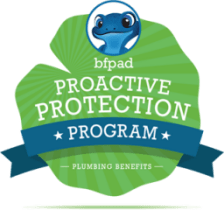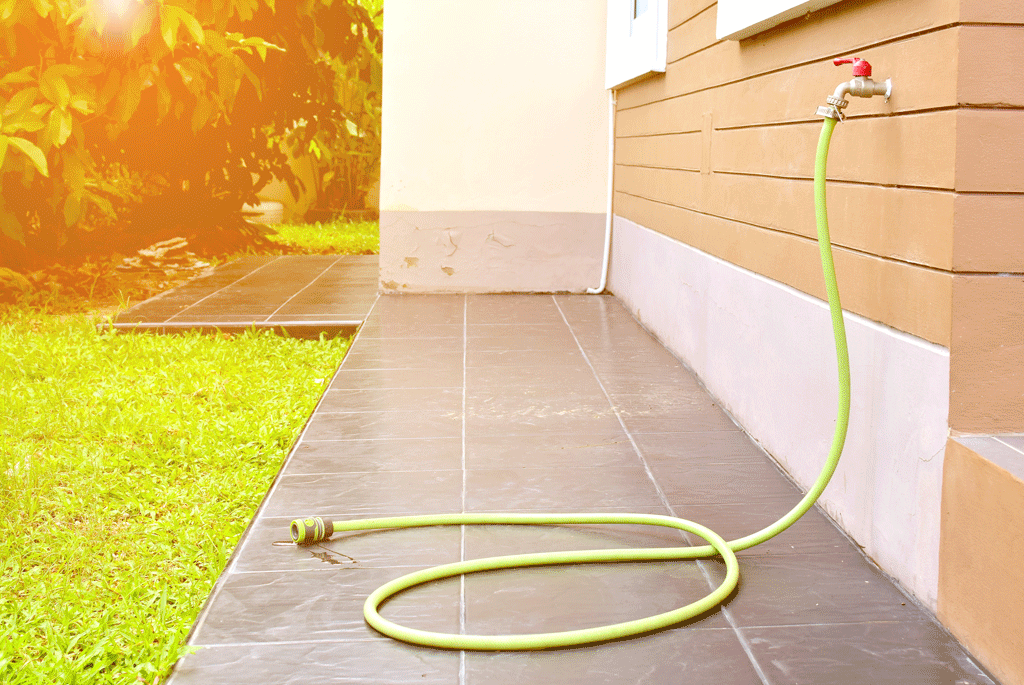
Plumber- Tips on How to Choose the Right Hose Connector
Gardening is a wonderful hobby that has become increasingly popular in recent years. To tend to your garden properly, certain tools and equipment are essential.
One such item is a hose connector, which is used to connect two hoses together and to connect hoses with spigots or sprinklers. Hose connectors come in various shapes, sizes, and materials; choosing the right one can make all the difference in your gardening experience.
With so many options available, it can be challenging to determine which connector should be used for which purpose. This blog post will discuss the significant factors plumbers recommend considering when choosing a hose connector.
Type of Hose Connection
The first thing to consider when choosing a hose connector is the type of hose connection you have. There are different types of hose connectors, including male connectors, female connectors, and couplings.
Male connectors connect to a female end and can fit onto the end of a water source. Female connectors have a threaded opening and can fit onto the end of a hose.
Couplings combine male and female connectors and are useful when joining two hoses. Consider the connection type of your hose connector before purchasing one.
Size and Compatibility
Hose connectors come in different sizes, and choosing one compatible with your hoses and other equipment is important. Most connectors come in standard sizes, but measuring your hoses and spigots is always a good idea to ensure you get the right fit.
Some connectors are also designed to work with specific types of hoses, such as those with different threading or thickness. Make sure to read the product descriptions carefully before making your purchase.
You can engage a professional plumber to assist you in selecting the right size and compatibility for your water system.
The Material of the Connector
The material of the connector you choose plays an essential role in its durability and performance. Hose connectors can be made of various materials, such as plastic, brass, aluminum, or stainless steel.
Brass connectors are the most common type, as they are durable and long-lasting, while aluminum connectors are lightweight and ideal for use in a small garden.
On the other hand, stainless steel connectors are the least common but are sturdy and do not rust. Plastic connectors are inexpensive, but they tend to crack or break easily.
Check the Pressure Rating of the Connector
The water pressure required differs based on the purpose and usage of the connector. If you need high water pressure for a power wash or an outdoor cleaning job, choose a connector that accommodates high water flow.
Similarly, if you need intermediate water pressure for watering plants and trees, select a connector that facilitates maximum water pressure.
The pressure rating of a hose connector is usually indicated in pounds per square inch (PSI).
You can find the pressure rating of the hose connector on the packaging or the connector itself. If you use a connector with a lower pressure rating than the water pressure in your system, the connector may develop leaks or burst, leading to costly repairs.
A professional plumber can help you select the right connector according to your water pressure requirements.
The Type of Water Use
Different types of hose connectors are designed for different purposes. For instance, quick-connect hose connectors are ideal for rapidly attaching and detaching watering tools, while Y-connectors will allow you to connect multiple hoses to a single faucet.
Some connectors, such as pressure washers and power sprayers, are designed for high-pressure applications. Therefore, you should consider your intended use when selecting a hose connector.
Ease of Use
Another important consideration when choosing a hose connector is the ease of use. Some connectors come with locking mechanisms that ensure a tight, secure connection, while others require pliers or wrenches to tighten the connector.
Quick-connect hose connectors are the easiest to use as they snap securely into place to attach and detach tools quickly. Consider how you’ll use your hoses and which type of connector will be most convenient.
If you struggle with a particular connector type, don’t be afraid to try something new. There are many options, and it’s worth finding one that makes gardening easier and more enjoyable.
Additional Features
Some connectors come with additional features that increase their functionality. For example, some connectors have an automatic water shut-off feature, which turns off the water supply when you remove the nozzle or spray gun.
Others have an adjustable flow control feature, allowing you to adjust water flow per your requirements. Determine what additional features you need based on your usage and select a connector that best suits your needs.
Don’t Choose A Hose Connector That Will Frustrate Your Gardening Efforts
Hose connectors may seem trivial, but selecting the right one can save you money, time, and effort in the long run.
Consider the plumber-recommended factors outlined above when choosing your next hose connector. Always select a durable material that can reinforce the strength of your hoses, check compatibility with your hoses, consider the type of connector based on your usage, and evaluate the water pressure required.
Lastly, consider the ease of use and if you need any additional features that can enhance the connector’s functionality. Choosing the right hose connector can make your gardening or cleaning experience smoother and effortless.
We Are the Plumbing Professionals to Contact
If you need help selecting or installing a hose connector, contact the plumbing professionals at bluefrog Plumbing + Drain of West Houston. Our experienced team of technicians can provide expert advice on the best connectors for your needs and install them correctly so that you don’t have to worry about leaks or damage.
We also offer other plumbing services, such as pipe repair and installation, sink and faucet maintenance, septic system services, and more. Contact us today to learn how we can help improve your home’s plumbing system.
See our most recent blog on this topic here.
Check out our reviews here
Photo By Chanchai Boonma at Shutterstock
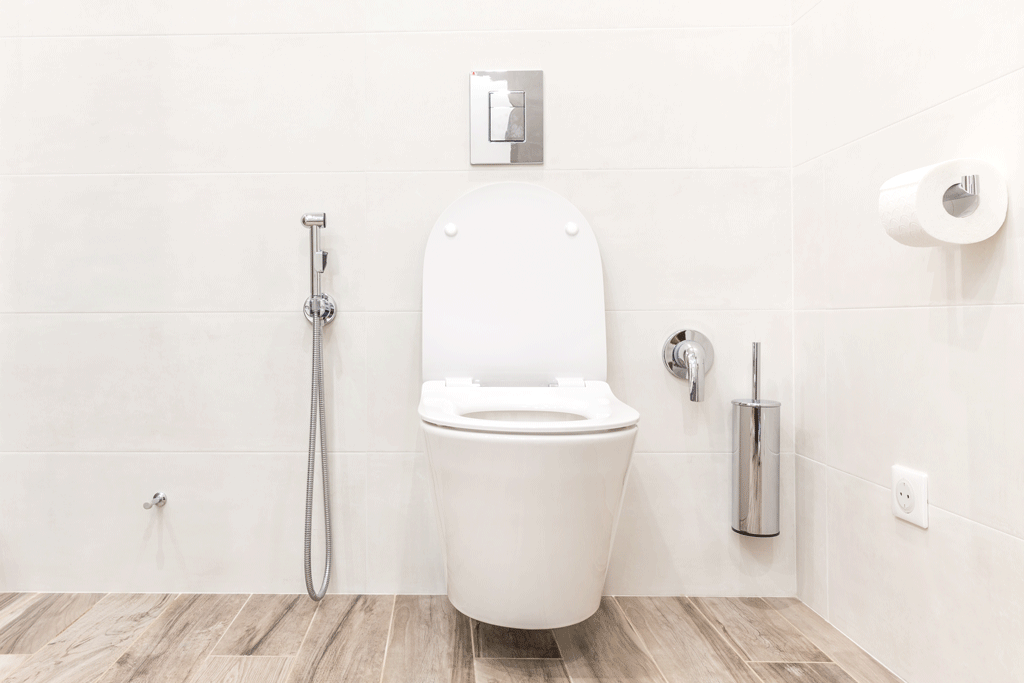
Want To Increase Your Bidet Spray’s Water Pressure? Plumber-Recommended Options
Using a bidet is becoming increasingly popular in many homes as they offer a more hygienic and comfortable toilet experience.
However, many people face a common issue: insufficient water pressure in their bidet sprays. A low water pressure spray can make cleaning less effective, longer, and uncomfortable. Fortunately, there are many ways to increase the water pressure in your bidet spray, from simple adjustments to buying additional accessories.
In this post, we will be giving you plumber-recommended options that can help increase your bidet spray’s water pressure.
Check on The Pressure Regulator
Most homes have a pressure regulator installed, which is used to adjust the water pressure to the needed level.
It can reduce water pressure or restrict water flow when it is not functioning correctly. This pressure setting may be adequate for other plumbing fixtures to function properly but insufficient for bidet spray use.
You can increase the pressure in the bidet spray by turning the knob clockwise on the regulator.
Also, the pressure regulator may be damaged or malfunctioning, leading to reduced bidet spray water pressure. In this case, contacting your plumber to replace the damaged or malfunctioning pressure regulator is advisable.
Open The Shutoff Valve
The shutoff valves can minimize the bidet spray water pressure by limiting or completely blocking water flow to the bidet if it is not fully open. It is located on the supply line running to the bidet and can be wholly or partially closed due to accidental closure, repairs, and maintenance.
A shutoff valve may also be closed off during the installation of the bidet spray. The valves can remain closed after the installation, which affects the water pressure and reduces the bidet spray water pressure.
To fix the problem, check your shutoff valve to ensure it is fully open and turn the shutoff valve counterclockwise until open if it is partially closed. If the water pressure is still low despite the valve being fully open, consult your professional plumber to find the problem and have it sorted.
Clean The Nozzles
Sometimes, your bidet spray pressure may reduce as a result of clogs. Bidet spray nozzles typically get clogged by rust, dust, sand, and other debris found in the water when used. It affects the water flow by reducing the amount of pressure.
Though some nozzles are self-cleaning, many bidet spray nozzles must be cleaned manually to improve the water flow.
You should follow the cleaning instructions provided for cleaning the nozzle. Regularly cleaning the bidet spray nozzle will minimize clogging and ensure optimal water pressure and flow.
If you are unsure how to clean the nozzles or the nozzle is damaged and can’t be cleaned, you may need assistance from a professional plumber to have it cleaned or replaced to restore the bidet spray water pressure.
Change The Spray Mode
Before using tap products like bidets in your home, check their spray modes. Many bidets have several spray modes, varying in water pressure from the bidet spray nozzle. Some of these settings may result in low water pressure.
When a wider spray mode is set, it may cover a larger area though it will result in lower water pressure. Nevertheless, a gentle spray setting may also reduce the water pressure to provide a gentle and comfortable user experience.
More often, pressure can be changed without you noticing, especially if you live with your family since not all members will use the same bidet spray mode. When the pressure is low, you may adjust the spray setting to increase the water pressure for a thorough and quick cleaning.
Check The Mesh Filter
A bidet spray generally has filters that remove impurities and dirt from the water. Over time, the filters get blocked with deposits in the water, more so if you use hard water. It, in turn, reduces the water flow and pressure.
When the filter is not cleaned or replaced, it may eventually block completely, blocking the water flow. Therefore, ensure you check on your mesh filters, clean them when clogged, or replace the filters to restore the water pressure. Knowing a comprehensive guide to the bidet spray is also essential, as it can help you maintain your bidet sprays.
Switch to a Non-electric Bidet
The type of bidet installed in your home may be why your water flow is not strong. It has nothing to do with the performance of your bidet. Non-electric bidets are more likely to produce a high-pressure water flow, unlike electric bidets, which are just the opposite.
Electric bidets come with multiple features, though the water flow is weaker. The pressure produced may be enough, but many people prefer high-pressure water flow. This can be felt more significantly if you have recently converted from a manual bidet to an electric bidet.
Invest in a high-end electric model with advanced motor power if you want high-water flows and more features in your bidet. It might be more strategic as they are comfortable and tend to last longer.
Check Your Water Supply
Sometimes, the water flow issue may result from poor water supply. Check for water supply failure in your house. If there is a water shortage in your home, it will affect the flow of water to your bidet.
When the water supply is the issue, shut the bidet down for some time and use it when the sufficient water supply is back to normal since there is not much you can do in such cases. The water pressure will eventually improve once the supply is standard if only water is the issue.
We Are the Plumbing Experts to Contact
If you need a plumbing service for your bathroom plumbing needs, contact us at bluefrog Plumbing + Drain of West Houston. Our knowledgeable plumbing experts can guarantee reliable plumbing solutions for all your needs. Call us today to schedule an appointment with one of our plumbing experts.
See our most recent blog on this topic here
Photo by mariakray at Shutterstock
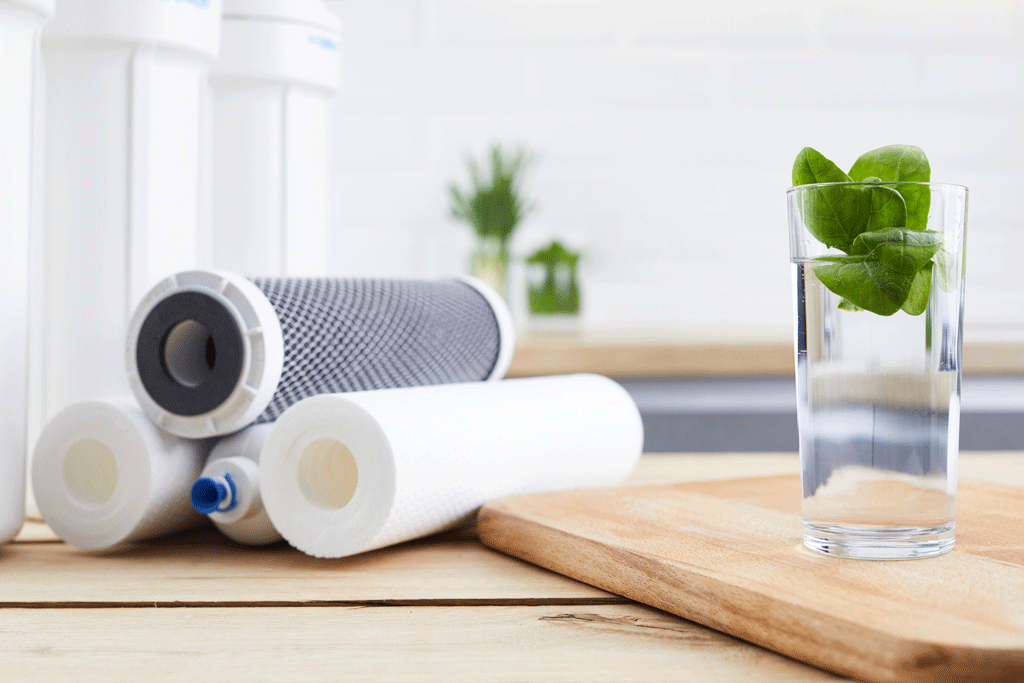
Reasons Your Reverse Osmosis System Is Experiencing Low Water Pressure: Call Plumber For Help
Reverse osmosis systems are essential in filtering water while ensuring a safe and clean drinking water supply. However, one of the most common issues homeowners with a reverse osmosis system may encounter, low water pressure can affect the overall performance of your water filtration system. This blog post will discuss why your reverse osmosis system is experiencing low water pressure and why calling a plumber for help is important.
Low Incoming Water Pressure
Most reverse osmosis systems require an incoming water pressure of at least 40 PSI to operate effectively. An incoming water pressure of 60 PSI is the best for optimal performance. When the water pressure is lower than this, the RO system won’t generate enough pressure to push the water through the membrane. As a result, water leaving the filtration system will be slower than usual.
Furthermore, lower water pressure can cause the RO system to produce lower-quality water, as the water may not be filtered effectively. If the water pressure is consistently low, it can put too much pressure on the RO system’s components, leading to premature wear and tear. You can fix this issue by hiring a plumbing professional to install a pressure booster pump at your water supply line.
Clogged RO Membrane
Another common cause of low water pressure in an RO system is a clogged RO membrane. The RO membrane helps filter out contaminants and impurities from your water. It has a lifespan of around 24 months and should be inspected regularly by a plumbing expert to ensure it is in good condition. When it becomes clogged, it restricts water flow through the system, resulting in lower water pressure.
Several factors can cause the RO membrane to be clogged, including the age of the membrane, the quality of water being filtered, and the quality of maintenance. You can prevent the RO membrane from clogging by hiring a plumber regularly to replace it.
Blocked RO Filters
A reverse osmosis system has multiple stages of filtration, and each stage has its filter. If any filters are blocked, they can restrict water flow through the system and cause low water pressure. Some of the filters in the RO system that can get blocked include the sediment filter, carbon filter, pre-filter, and post-filter. The filters remove contaminants from the water before reaching the RO membrane. They will get blocked if you don’t hire a plumbing expert to regularly change or clean the filters. Ensure the filters are changed annually unless the contaminants present require you to make more frequent changes. Furthermore, remember to follow the manufacturer’s filter replacement and maintenance recommendations to ensure the RO system remains in good condition for years.
Kinks in the Water Line
A kink in your water supply line is another issue that can reduce the water supply from the RO system. If the system is installed underneath the kitchen sink, things stored now and then can press against a piece of tubing, causing a blockage.
To know whether a kink is a reason for the low water pressure, inspect the water supply lines in the system and see if the hoses are well connected. Also, ensure the main water supply valve is operating and fully open. If the water pressure doesn’t improve, contact a plumbing expert to help restore your RO system’s normal performance.
Ruptured Bladder Tank
This more serious issue might cause the RO pressure to drop. Different factors can cause the holding tank bladder to rupture. In most cases, however, it is due to a lack of maintenance. Detecting a ruptured bladder tank is easy. Check if the water flow rate reduces after providing just one cup of water. If the RO tank is ruptured, you must call a plumbing professional to replace the entire storage tank.
Air Gap Issues and Faucet Aerators
If your system has a dedicated faucet, it may include an air gap, a small hole preventing contaminated water from flowing back into the system. If this air gap becomes clogged with debris, it can cause low water pressure. Sometimes the issue isn’t with your reverse osmosis system but your faucet aerator. Mineral buildup in the aerator can cause low water pressure, and simple cleaning can fix the problem.
Low Temperature
When temperature in your home drops too low, it can impact the performance of your reverse osmosis system. In particularly cold weather, the system may even stop working altogether. If you’re experiencing low water pressure during cold months, this could be the cause.
Improper Installation and Leaks in System
If your RO system is not installed correctly, it could result in low water pressure. A plumber can assess your installation and make necessary adjustments to ensure your system works properly. A leak in your RO system can also cause a drop in water pressure. Check all the connections in the system to ensure there aren’t any leaks. If you notice any leaks, call a plumbing expert to fix them.
Low water pressure from your reverse osmosis system can be frustrating, but fortunately, it’s often fixable. By calling a plumber for help, you can identify the cause of the problem and find a solution that restores normal water pressure in your home. Whether it’s a clogged filter or something more serious, working with a plumbing professional is the best way to ensure your system operates efficiently.
Experiencing Issues With Your Reverse Osmosis System? Contact Us!
A reverse osmosis system ensures your home has access to safe drinking water. To remain in good shape, you must service it regularly. Servicing your system regularly ensures a longer lifespan and improved efficiency. If you need professionals to help service your RO system, call us today at bluefrog Plumbing + Drain of West Houston. We have experts who will service your system and fix any issues it could be experiencing. To book a service, call us now.
See our most recent blog on this topic here.
Photo By wertinio at Shutterstock
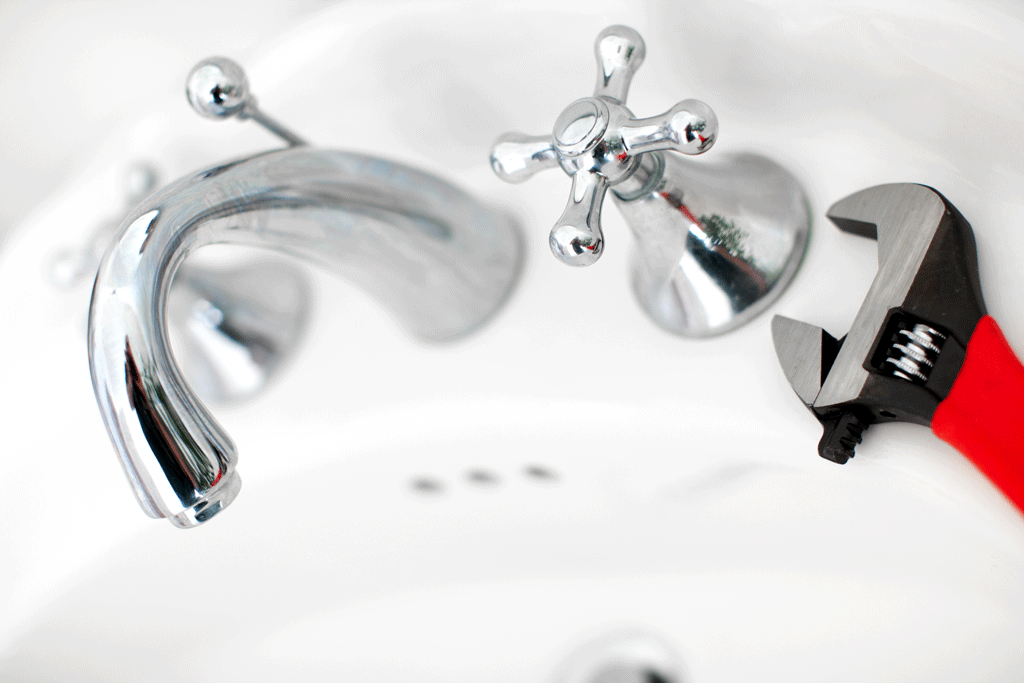
A Plumber Recommends High-Efficiency Water Conserving Plumbing Fixtures For Homeowners
Water in homes aids diverse activities for sanitary purposes, cooking, personal hygiene, and drinking. Most households pay high water bills due to plumbing issues such as leaks or inefficient fixtures that use large amounts of water.
The Environmental Protection Agency cites that water wastage due to leaking fixtures in an average family account for approximately 9,400 gallons annually.
Stopping water wastage and significantly reducing your water bills requires water-efficient plumbing appliances.
The fixtures reduce water usage in showering, toilet flushing, and doing dishes. They help in water conservation which helps reduce freshwater scarcity in the country. Below are some of the water-saving units you can upgrade to.
Low-flow Showerheads
According to the EPA, showering activities account for 17 percent of indoor water use, almost 40 gallons daily in a household. Conventional showerheads consume 2 to 5 gallons of water a minute, which low-flow options can reduce with minimized flow rate. They are the best water conservation fixtures that decrease water usage by almost half. These shower heads will help you save money as the water bills decline.
A plumber can also recommend shower heads with a WaterSense label, which are the best in water conservation. If you want to replace your old, damaged, or inefficient showerhead, you can weigh the following pros and cons before buying one.
Advantages Of Water-saving Showerheads
- High-efficient showerheads significantly reduce water usage and utility bills.
- The water pressure remains steady even with a lower flow rate.
- These fixtures minimize water and energy usage, especially in homes with water heaters.
- They are environmentally friendly.
- They have higher upfront costs than conventional options.
Disadvantages Of Low-flow Showerheads
- These showerheads create a time lag because the flow rate increases showering times.
- They are prone to clogs because the water outlets are tinier than those in standard showerheads.
- Hot water cools down faster.
- People used to showerheads with higher flow rates can find them uncomfortable and less enjoyable.
- Compared to conventional showerheads, they are more expensive.
Water-saving Toilets
Another effective way of reducing water use in your household is by replacing toilets with more water-conserving options.
Flushing toilets consumes too much water, almost 30 percent of the total water used in a home. If you have many people in your house and get the chance to remodel your toilet or bathroom, you should consider high-performance toilets in the market.
You can opt for dual-flush toilets to lower your water consumption by more than half. The toilet fixtures have low-volume flush for pee and puke and high-volume flush for poop. High-efficient toilets that are not double flush can also reduce your water consumption.
They use advanced technology to flush the toilets with little water, regardless of the type of human waste. These water-conserving toilets have additional features that help detect leaks for prompt repairs.
Besides being water-efficient and elegant, the high-efficient sanitary fixtures can add to your home’s value. If you go for WaterSense toilets with tanks, the hired plumber can ensure they comply with plumbing standards for peak performance.
Pros of High-Efficient Toilets
- Dual flush and other water-saving toilets are the best for reducing water consumption.
- They have more advanced features, such as dual flush.
- The installation process of the toilets is simple.
- Some toilets use advanced technology, including vacuum, suction, or pressure assist features that make flushing with little water possible.
Cons Of Water-Saving Toilets
- Some may fail to flush out human waste efficiently due to low water usage, leading to numerous flushing.
- They are highly susceptible to clogs due to lower water use
- Since they have additional features or flushing technologies, they cost more to buy than standard toilets
Water Conserving Faucets
You can also change your faucets to high-efficient options to decrease your water bills and save water for later use. They supply your water at a lower flow rate, reducing water usage at the end of the day. The faucet aerator is a water-conserving feature that is small-sized and found at the end of the faucet.
Though they decrease the water flow rate, you will enjoy the same pressure. In addition, the aerator with low water flow can also preserve your fixtures from quick damages resulting from a high flow rate. Like other plumbing appliances, they have strengths and weaknesses a plumber can help evaluate before purchase.
Supremacy Of Water Conserving Faucets
- Saves large amounts of water by decreasing water use and wastage
- Your water utility expenses drop significantly
- They are environmentally friendly as they preserve water and other natural resources
- Plumbing professionals find the faucets easy to install
Drawbacks Of High Efficient Faucets
- Homeowners can shy away from these faucets because they cost way more than the standard faucets because of the additional aerators.
- They are not perfect options for folks who love using water with a higher flow rate.
- Highly efficient faucets are not readily available in the market.
- Increased risks to clogs that can result from the tiny water passage.
In Conclusion
You can have high water bills due to excessive water use or wastage if your plumbing fixtures are old, faulty, and inefficient. There is a need to upgrade your water appliances to more water-conserving options.
Plumbing contractors can upgrade your fixtures to more efficient types like dual toilets, highly efficient showers, and water-saving faucets.
They help choose the ones that meet your water needs by evaluating multiple aspects, including flow rate and water pressure. The advanced WaterSense toilets, faucets, urinals, and showerheads can cut your water expenses by nearly half.
Do You Need To Upgrade Your Fixtures? Call Us To Schedule An Appointment?
If you want to revamp your plumbing fixtures to conserve water and reduce bills, call bluefrog Plumbing + Drain of West Houston. We have knowledgeable plumbing experts that can handle installations, repairs, replacements, and regular tune-ups.
Our customer-centric company uses an expansive approach to meet your plumbing needs. When you are tired of paying high water bills because of your old plumbing fixtures, you can call us today to get a plumber to upgrade to more highly-efficient water-conserving options.
See our most recent blog on this topic here.
Photo By Constant at Shutterstock
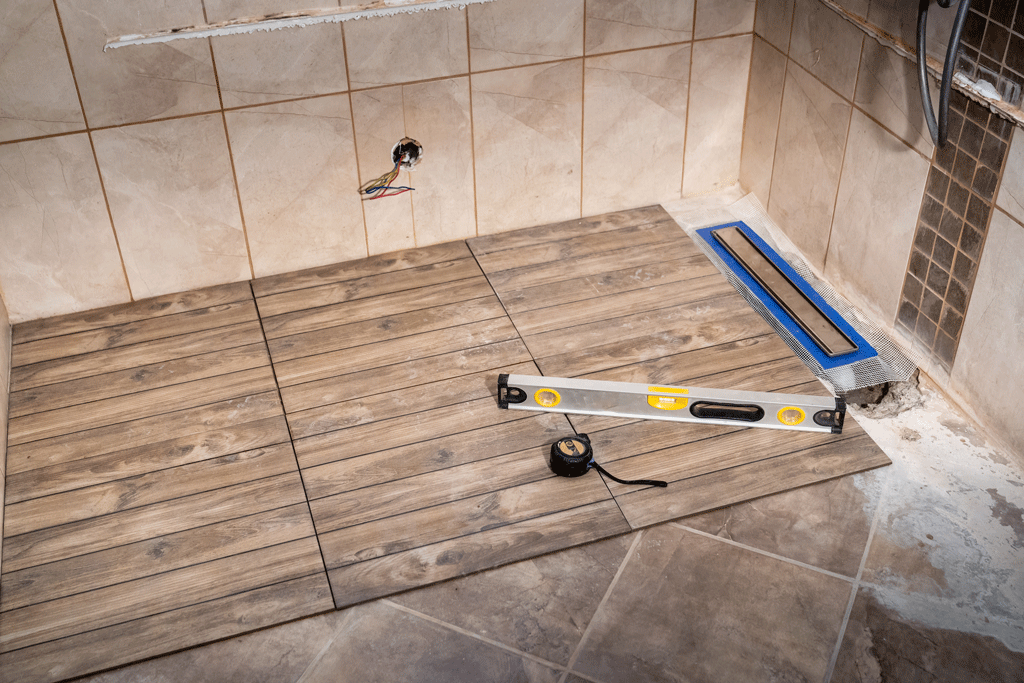
Linear Drain Installation Mistakes You Are Going To Make If You Don’t Hire a Plumber
Have you ever wondered how to install a linear drain yourself? Sure, the internet and YouTube might make it seem like a piece of cake, but the job can quickly become a big headache if you don’t have the right tools and resources on hand.
The truth is that installing a linear drain isn’t as easy as some people think – there are lots of mistakes that can happen along the way. From selecting an inappropriate drain size to not laying out your pipe correctly, these installation errors could cost you time and money and even cause structural damage.
To avoid making these common installation mistakes with your next DIY project, consider hiring a professional plumber with experience with linear drains.
Common DIY Linear Drain Installation Mistakes
Inaccurate Measurements
One common mistake when installing a linear drain is incorrect measurements. The linear drain won’t fit correctly into the shower space when the measurements are off. This can cause water to pool in the shower area, leading to floor damage.
Before purchasing a linear drain, you should have a professional measure the shower area’s size, the drain’s depth, and the distance from the shower area to the walls. This will ensure that you buy the right size drain for your project.
Incorrect Slope
The water used when taking a shower should never pool on your bathroom floor as it can cause damage if it stays there too long. When you notice water flooding in the shower area when you take a shower, there are high chances the drain was not sloped correctly.
The shower floor must be sloped precisely towards the linear drain to ensure good drainage. The slope of the shower floor should be at least 1/4 per foot towards the linear drain. It should remain even across the shower floor to prevent water from pooling in low spots. To ensure the installation is done correctly, it is good to contact a plumber.
Poor Sealing
After a linear drain is installed, it needs sealing so that water doesn’t seep through the gaps and affect the lifespan of the shower floor. The sealing task involves applying sealant around the edges of the linear drain where it meets the tiles.
Proper sealing ensures water does not seep through the gaps. When the sealing is not done right, water can seep through the gaps, leading to water damage, mold, and mildew growth. If you don’t have the skills to install a linear shower drain, consult a plumber who has experience dealing with linear drain installation.
Incorrect Placement
A linear drain should not be placed too close or far from the shower wall. It should be in the center of the shower floor, at an appropriate distance from the shower walls.
Water will pool in the corners if the drain is too close to the shower wall. On the other hand, placing it too far from the wall will create a safety hazard as someone steps on the edge of the drain while entering or exiting the shower.
Use of Poor-Quality Materials
Because a linear drain must deal with water daily, it must be made from high-quality materials. Other than the drain itself, the waterproofing should also be excellent. Low-quality materials deteriorate quickly and can cause problems such as clogs, leaks, and corrosion.
When buying materials for linear drain installation, ensure the materials are suitable for the job. Any material used in the installation should be high quality so the drain can serve you for a long time. In addition, choose a linear drain from a certified manufacturer that uses quality materials in their products.
Poor Waterproofing
Waterproofing is a crucial step in linear drain installation. If waterproofing is not done correctly, the floor can be damaged by water and mold growth in the bathroom.
During installation, the waterproofing material should be installed properly around the drain. The material should be directly beneath the tiles to prevent water from seeping through the gaps.
When choosing a waterproofing membrane, it is good to note that not all membranes are compatible with all linear drains.
Choose a membrane compatible with your specific linear drain model for proper sealing. If you need help choosing the right waterproofing material for your linear drain, consult a plumber who deals with linear drain installation.
Incorrect Sizing
The size of the linear drain should be considered carefully during the planning phase of your project so you can get the right size that will accommodate your shower needs.
If the drain is too small for the shower area, it won’t handle the water volume generated while you are showering, which can cause water to pool on the floor. On the other hand, if it is too large, it will take up space unnecessarily and take time to install.
Poor Weep Hole Installation
Weep holes are small openings in the linear drain that enable water to drain in case of a clog or backup. If the weep holes are not installed well or sized correctly, you will experience poor drainage every time you shower.
If the water does not flow freely out of the drain channel, a breeding ground for mold and bacteria will be created, leading to bad odors and health issues. Therefore, ensure the weep holes are of the correct size and installed in the right location for proper water drainage.
Contact Us!
Linear drain installation is a task that should not be handled by anyone who is not experienced or certified to do the job. The job entails a lot, and a single mistake will leave you with multiple bathroom drainage issues. Call bluefrog Plumbing + Drain of West Houston today to ensure your linear drain is installed correctly. We have certified professionals who have dealt with linear drains for years. Call us today, and we will help you choose and install the right linear drain.
See our most recent blog on this topic here.
Photo By fotopanorama360 at Shutterstock
Check out this tip!

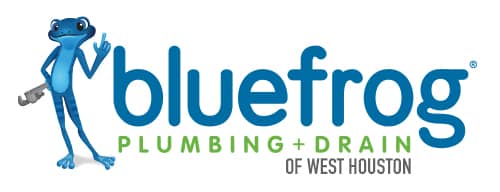



;)


